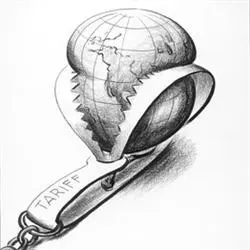The Impact of Tariffs on the U.S. Housing Market: What Homebuilders Need to Know

As a hub for investors and economic enthusiasts at Extreme Investor Network, we believe that understanding the intricacies of tariffs and their ripple effects on the housing market is crucial for making informed financial decisions. Recent developments highlight how tariff threats have significantly dampened homebuilding confidence, leaving builders and investors in a state of uncertainty.
A Decline in Builder Confidence
According to the latest data from the National Association of Home Builders (NAHB)/Wells Fargo Housing Market Index, builder confidence has plummeted to a reading of 42—the lowest in five months. This drop of five points from January to February signals a worrying trend in the homebuilding sector. Builders initially had high hopes that the Trump administration would ease some regulatory burdens, but the looming threat of tariffs has quashed those aspirations, sending costs soaring.
Rising Costs: A Straightforward Calculation?
The effect of tariffs on key materials—namely steel, aluminum, and lumber—cannot be overstated. As highlighted by NAHB chief economist Robert Dietz, approximately 32% of home appliances and 30% of softwood lumber are sourced from international markets. The uncertainty surrounding tariffs has left builders grappling with inflated costs which could ultimately trickle down to homebuyers.
Interestingly, President Trump has suggested that the U.S. can rely entirely on domestic resources, claiming, “We don’t need their lumber, because we have our own forests.” However, the reality is that the U.S. imports at least a quarter of its lumber from Canada, raising eyebrows about a strategy that overlooks essential supply chains.
The Looming Threat of Mortgage Rates
As if tariff-induced material costs weren’t challenging enough, builders are also facing the specter of rising mortgage rates. As of now, Freddie Mac reports the average 30-year fixed mortgage rate hovering around 7%. After the historically low rates experienced during the COVID-19 pandemic, the return to higher rates has diminished affordability for many homebuyers.
Inventory levels across the country have seen an uptick, but waning demand is creating a challenging environment for builders. Notably, the NAHB reported that 26% of builders have cut home prices this month, following a 30% decline in January.
Navigating the Tariff Minefield
The complexities of tariff negotiations are proving to be detrimental for businesses across various sectors. With tariffs in place, companies struggle to predict material costs, leading to financial strain and hesitancy in investment. For builders, this creates an environment ripe for unpredictability, forcing many to reconsider their project timelines and budgets.
Conclusion: Strategies for Homebuilders and Investors
At Extreme Investor Network, we advise homebuilders and investors to stay informed about changes in tariffs and material costs that could impact the housing market. As we navigate this uncertainty, strategic planning, diversification of supply chains, and a keen eye on mortgage rate fluctuations will be essential.
By adapting to these challenges and leveraging our insights, you can emerge stronger in a volatile market. Keep visiting our site for continued updates and expert analysis to equip yourself with the knowledge needed to thrive in today’s economic landscape.

